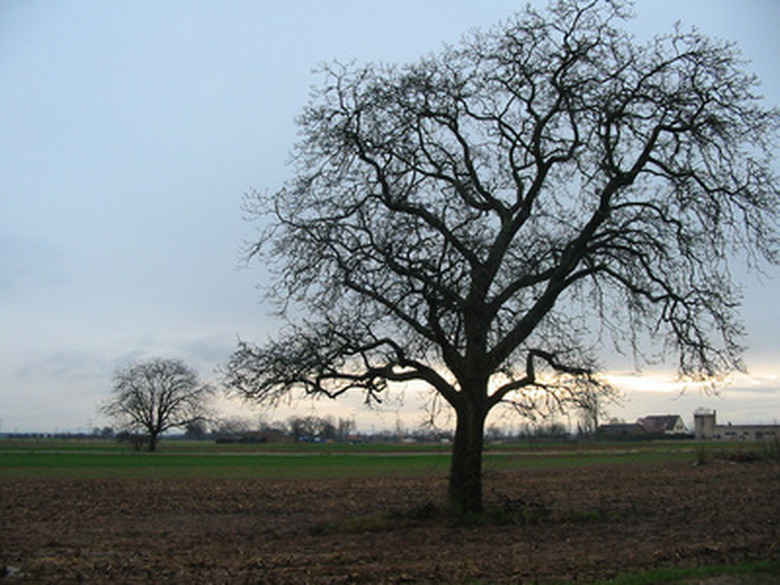The Value Of Black Walnut Lumber
In addition to their value as shade and nut-producing trees, black walnut has long had a reputation as a valuable species for timber and veneer production. Though prices for top-quality timber peaked in the 1970s, high-quality black walnut can still command fairly decent dollar amounts. However, quite a few factors are in play when determining the value of any black walnut specimen, and not every tree is worth a small fortune.
About Black Walnut
Black walnut (Juglans nigra) is one of six species of walnut tree which grows in the United States. The tree grows across the continent but is prevalent mainly in the east, spreading from Maine to the Carolinas and as far west as Michigan and Missouri. Trees are rather long-lived, known to exceed 200 years in age, and until they began to be harvested for timber, trees of 3 to 4 feet in diameter were relatively common. Black walnut prefers rich, deep soils of well-drained loam, growing poorly in sandy or rocky soils. In the wild, walnut is frequently found growing with other tree species including elm, sugar maple, ash, red oak and hickory.
- In addition to their value as shade and nut-producing trees, black walnut has long had a reputation as a valuable species for timber and veneer production.
- In the wild, walnut is frequently found growing with other tree species including elm, sugar maple, ash, red oak and hickory.
Black Walnut Uses
High-quality walnut is valued primarily for its use as furniture wood but especially for its use in veneers. Walnut veneer is produced by cutting very thin sheets of high-quality wood, which can then be glued to a different kind of wood to create a solid walnut appearance without the cost of actual solid walnut wood. Walnut heartwood in particular is said to be unique, as it appears to be deeply luminous and lustrous when finished. The main use of lower-quality walnut is as firewood.
Market Value of Black Walnut
Trees of great size and quality were in abundance up until the 1970s, but because of the decades required to grow trees to adequate size, price increases could not force better quality wood to market since it simply did not exist. Prices fell through the 1980s but have slowly rebounded through the 90s, and in recent years prices have tended to fluctuate between $3 and $10 per board-foot, or 144 cubic inches of wood. Market forces change the price of walnut lumber daily.
- High-quality walnut is valued primarily for its use as furniture wood but especially for its use in veneers.
- Trees of great size and quality were in abundance up until the 1970s, but because of the decades required to grow trees to adequate size, price increases could not force better quality wood to market since it simply did not exist.
Black Walnut Quality Characteristics
Before calling a contractor to cut your walnut shade tree down, first assess your specimen. Black walnuts of the highest quality tend to be very tall and straight, branching only near the crown–usually of the type found in forests rather than in back yards. Trees are judged to be of prime value when they are unblemished by disease, knotting, animal or mechanical damage, unbranched in its lower reaches and of a relatively large diameter at breast height, or around 4 feet from the ground. Additionally, trees in urban or suburban settings are generally not good candidates for timber sales, since they generally have large limbs branching away from the main trunk at a low height and may contain embedded obstructions such as nails, staples, wire fencing or other metal objects.
Other Considerations in Walnut Timber Sales
Hiring a certified arborist or other woodland professional to assess your walnut timber is the surest way to have an accurate assessment of the potential value of the tree. Though final pricing is determined by market value of timber on any given day, efficiency of the sawmill processing the lumber and the actual quality of the harvested lumber, estimates by professionals generally fall within current valuations. When working with lumber buyers or freelance timber contractors, a timber sale contract which both parties sign ensures that the interests of both buyer and seller are protected.
- Before calling a contractor to cut your walnut shade tree down, first assess your specimen.
- Additionally, trees in urban or suburban settings are generally not good candidates for timber sales, since they generally have large limbs branching away from the main trunk at a low height and may contain embedded obstructions such as nails, staples, wire fencing or other metal objects.
